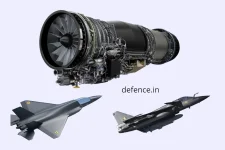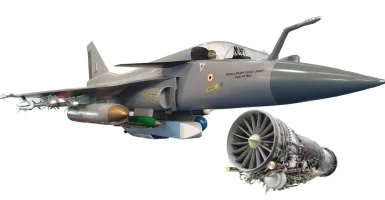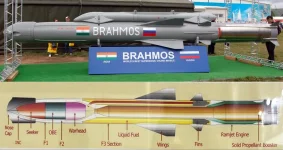- Views: 2K
- Replies: 9
The Indian Air Force (IAF), a crucial part of India's nuclear deterrent strategy, currently relies on fighter aircraft like the Mirage 2000, Jaguar, and potentially the Rafale to deliver nuclear weapons. However, these aircraft are presently equipped to use gravity-based nuclear bombs, a method requiring them to fly dangerously close to their targets.
This approach raises concerns about the safety and success rate of missions, especially against adversaries with modern air defence systems. Experts suggest that adopting air-launched nuclear-capable missiles is essential for enhancing the safety and effectiveness of India's aerial nuclear deterrent.
India maintains a nuclear policy based on "No First Use" and aims for a "credible minimum deterrence." This strategy relies on a nuclear triad – the ability to launch nuclear weapons from land, sea, and air – to guarantee a retaliatory strike capability.
While the land-based Agni missile series and sea-based assets like the Arihant-class submarines carrying K-series ballistic missiles provide robust second-strike options, the air component depends on free-fall bombs. This older technology potentially exposes IAF pilots and expensive aircraft to significant risks when facing advanced enemy air defences, weakening the overall credibility of the air leg of the triad.
The challenge lies in the increasing sophistication of air defence networks in the region. Potential adversaries operate advanced systems, such as China's S-400 and HQ-9 surface-to-air missiles, and Pakistan continues to upgrade its air defence capabilities.
Flying directly over or near heavily defended zones to drop a gravity bomb makes the delivery aircraft highly vulnerable to detection and interception. This significantly increases the risk of the mission failing and the loss of valuable assets and personnel, potentially undermining India's ability to retaliate effectively from the air.
Modern air-launched nuclear missiles offer a compelling alternative by providing a "standoff" capability. Missiles like the French ASMP-A (compatible with Rafale jets) or similar systems used by other major powers can be launched from hundreds of kilometres away from the target. This allows the launch aircraft to remain outside the effective range of many enemy air defence systems, greatly improving the safety of the crew and the likelihood of mission success.
Adopting such technology would bring India's aerial nuclear delivery systems in line with contemporary international standards and provide a more assured retaliatory option.
The IAF already possesses aircraft platforms suitable for carrying such advanced weaponry. The Rafale fighter jets, acquired starting in 2020, are known to be compatible with air-launched missiles like the ASMP-A in French service.
Furthermore, the Su-30 MKI, which forms a large part of the IAF's fighter strength, is a versatile platform that could likely be adapted to carry a future Indian air-launched nuclear missile through dedicated integration programs. Transitioning to missiles would also simplify handling and deployment logistics compared to gravity bombs.
India's Defence Research and Development Organisation (DRDO) possesses considerable expertise in missile technology, suggesting indigenous development is a viable path. The successful development and integration of the BrahMos supersonic cruise missile (an India-Russia joint venture) onto the Su-30 MKI platform demonstrates this capability.
DRDO could potentially develop a new nuclear-capable air-launched missile or adapt existing designs. Alternatively, India could explore acquiring such technology through collaboration with strategic partners like France, which has previously engaged in defence technology transfers.
The strategic need for this technological shift is pressing. In a scenario demanding nuclear retaliation, ensuring the survival of the delivery platform is critical for a credible response. Sending aircraft into heavily contested airspace risks mission failure before the weapon can be deployed, thereby weakening India's second-strike assurance.
An air-launched missile fired from a safe distance ensures the IAF can hold distant targets at risk while minimizing exposure to enemy defences. This enhanced capability would significantly strengthen India's deterrence posture and force potential adversaries to adjust their own defence strategies.



